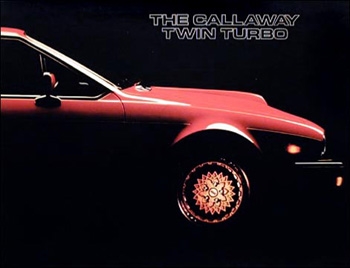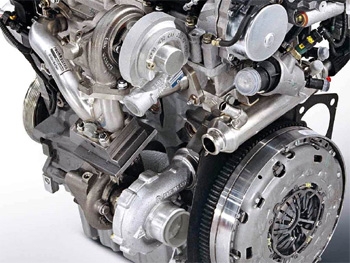Recent
rumours emanating from Alfa Romeo’s development centre
are being met with widespread acceptance by Alfa Romeo
enthusiasts, who are keenly looking forward to the marque’s
next generation of sporty cars.
Although
it has to be anticipated that several of the projects in
the development schedule will not make it into
production, optimistic onlookers do however perceive a bright
future. The current mentioning of Maserati parts sharing
schemes, new large-capacity V8 power
units, and all-wheel-drive thoroughbreds, all hammer home
the desired direction of Alfa Romeo as a
limited-compromise manufacturer of luxury sports cars.
Another,
perhaps less-romantic side is the General Motors
Powertrain joint venture. With many enthusiasts going
green at the thought of characterless Alfa’s, it is
worth mentioning that Alfa Romeo have an ironic and
highly interesting past with General Motors.
This is a
story which also ties in with the future 1.9 M-Jet Twin
Turbo engine, a unit expected to debut on the Alfa 148
in 2006. The
twin-turbo diesel engine is a result of the GM-Fiat
Powertrain joint venture, with the general technology
behind the engine already having been presented on the
Opel Vectra OPC concept.
Fortunately,
the advanced serial turbo charging technology which is
to be used on the Alfa Romeo unit dispels the
traditional disadvantages associated with bi-turbo
systems, and allows for the ‘perfect’ combination of
increased performance with lower fuel consumption.
The
idea behind the new serial design is quite different
from that of conventional parallel twin-turbo systems,
with the two turbochargers being used both individually
as well as collectively according to conditions.
At low engine speeds, up to 1,800 rpm, air induction is
delivered without lag by a small, high spool rate
turbocharger that is able to deliver up to 3.2 bars of pressure. The effect
is immediate, with a tremendous 400 Nm of torque
available from as low as 1,400 rpm on the 1.9 litre Opel
prototype engine.
As the revs rise over 1,800 rpm, a butterfly
valve, controlling the exhaust gas pressure to a second
high volume turbocharger, starts to open.
|
 |
|
The Callaway C3, built at request of the US importer
'Alfa Romeo Incorporated' and supported by the
factory, was designed to trounce the Maserati
Biturbo |
|
|
 |
|
The
new serial turbocharging system will offer
tremendous improvements in both peformance and
economy for the Alfa Romeo 1.9 M-Jet Diesel
twin-turbo engine |
|
|
With the rpm needle moving up to the 3k marker, the large
turbocharger feeds increasing loads of air into the system,
backed up by the additional boost of the small turbo.The
exhaust gas butterfly valve opens fully at 3,000 rpm, with
the large high volume turbo charger now in full control,
dumping the engine with ever increasing amounts of cool air
up to the red line.
The result is shockingly aggressive,
like a steroid infuse gone berserk. There is no need to rev
this engine to it’s limit, however, as the peak torque
available between 1,400 and 3,600 rpm is where the
acceleration is at its best. The 0-100 km/h dash is reached
in a lightening 6.5 seconds.
Astonishingly,
the new engine has delivered preliminary fuel consumption figures are lower than
those of the current 1.9 litre JTD engine, making this a
true masterpiece of engineering excellence.
And
the ironic link with the past? Well, the Twin Turbo GM unit
transpires in spirit from the 1983 Callaway C3 GTV 6, a car
designed to Alfa Romeo’s specifications to trounce the
Maserati Biturbo’s Stateside appeal.
The
Callaway C3 GTV 6 was a properly developed car, designed to
withstand the rigour of Alfa Romeo’s in-house testing programmes. The
intercooler packaging was particularly well thought out,
replacing the intake plenum on top of the engine to ensure
effective cooling whilst reducing turbo-lag issues.
Despite
the high costs of the Callaway GTV 6 - over 200 man hours
went into each car -, and low production volume, the car was
considered as a major success. Indeed, it was the GTV 6 that
initiated Callaway’s projects with the Chevrolet Corvette
after a GTV 6 ended up impressing General Motors on the
proving ground.
The
success of the Callaway C4 Corvette Twin Turbo, produced
from 1985 to 1991, both on track and as a road-going
ballistic missile, has come full circle. Now the essence of
twin turbocharging, pursued by General Motors following
their interest in an Alfa-based special, is set to blow Alfa
Romeo’s future range into a new dimension.
By Paddy & James Granger |
|
 |
|
![]()
![]()